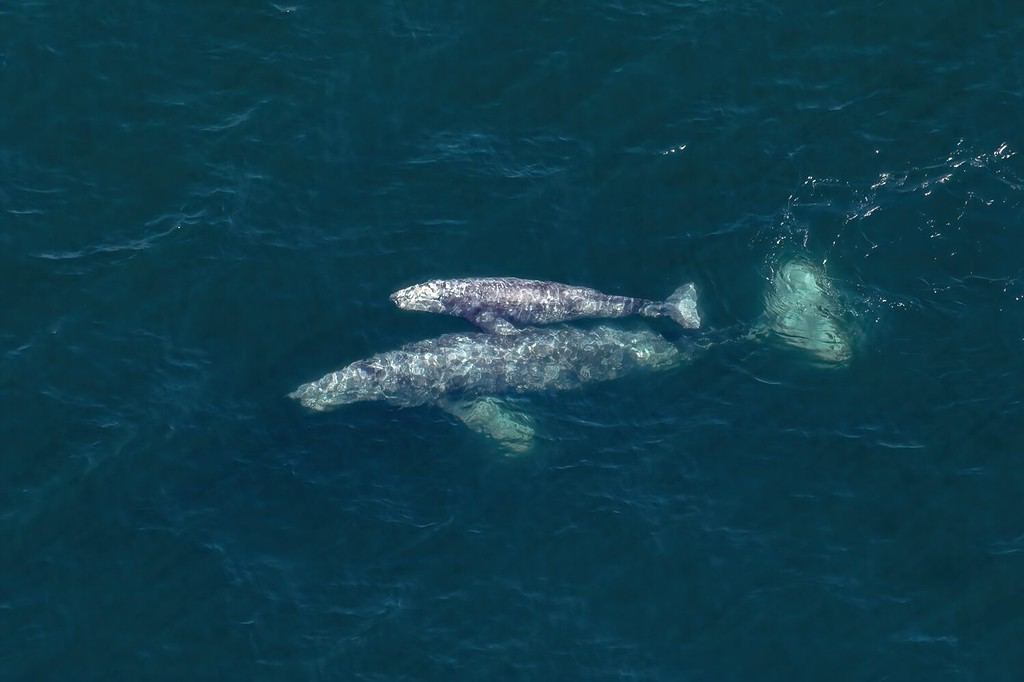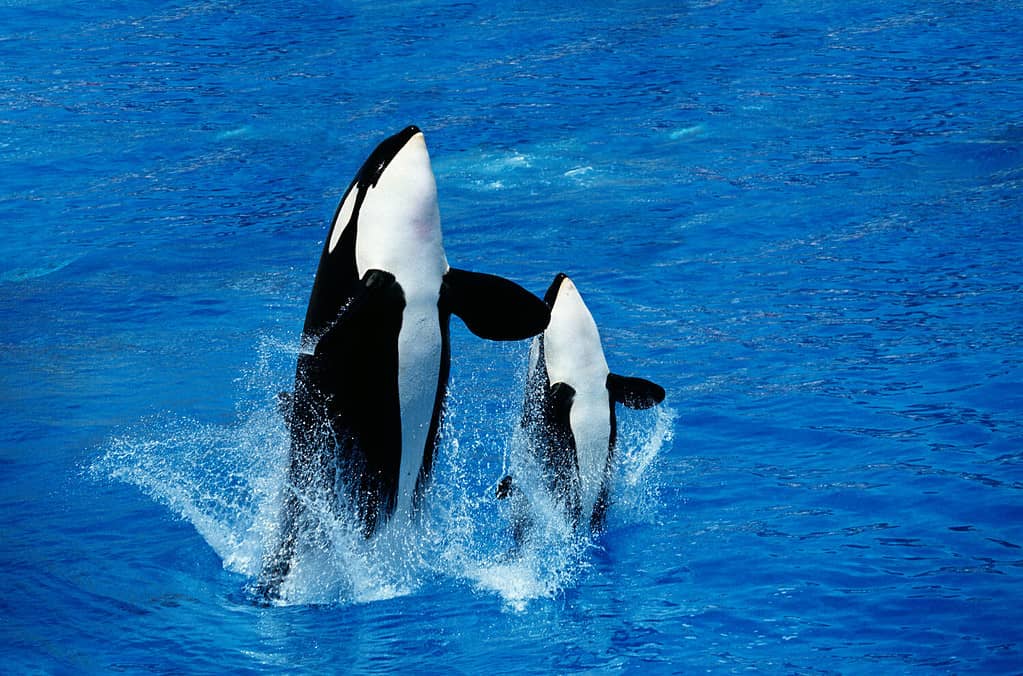Whales are highly social creatures that live and travel in tightly-knit pods. Whales have evolved various intraspecific communication methods to thrive and maintain a cohesive social group. These incredible marine mammals primarily communicate with each other through acoustic signals and body language.
In this guide, we’ll delve into examples of whale communication across several species.
Read on to learn more!
How Do Whales Communicate: Acoustic Signals
Whales rely heavily on acoustic signaling to communicate at close range and across incredibly far distances. Clicks, pulsed calls, whistles, and songs are the primary methods of communication across a range of whale species. Only baleen whales produce songs.
The Acoustic Communication of Toothed Whales
Toothed whales of the suborder Odontoceti include species such as spade-toothed whales, sperm whales, belugas, and narwhales. It also includes members of the highly social dolphin family. These marine mammals primarily produce their whistles, calls, and clicks by manipulating air through a structure in their nasal passage beneath the blowhole called the “phonic lips.”
Toothed whales can create complex sounds at depths of over 3,000 feet. In these conditions, they have decreased respiratory air volume and pressure-collapsed lungs to adapt to the extreme pressure of the deep sea. Scientists are still researching just how toothed whales, especially deep divers like sperm whales, can so effectively create their range of acoustic communications in these pressurized depths.

Toothed whales produce sounds through a structure called the phonic lips in their nasal passages.
©wildestanimal/Shutterstock.com
Codas in Sperm Whales
Much research exists on sperm whale (Physeter macrocephalus) communication due to the vastness and complexity of their intraspecific acoustic signaling. While sperm whales use clicks and buzzes for echolocation to navigate and hunt, they also use patterns of three or more broadband clicks called codas to communicate with each other. According to researchers, codas are socially learned, stereotyped patterns of clicks that pass down from generation to generation. They are often distinct among different whale clans and have unique signatures used to identify each other and pass down information crucial to social learning.
Pulsed Calls and Whistles
Pulsed calls encapsulate a range of acoustic signals that whales often describe as trills, chips, squeaks, screams, and squawks. The meaning of these acoustic signals can vary depending on the context and include friendliness, aggression, and identification.
Like codas, pulsed calls can have distinct vocal signatures used for individual, pod, or clan identification. These calls also exist at varying frequencies depending on the species. For example, narwhals (Monodon monoceros) typically produce pulsed calls ranging in frequency between 500 to 48,000 Hertz. Beluga whales (Delphinapterus leucas) can produce a particularly impressive range of calls and high-frequency whistles, earning them the nickname “canary of the sea.”
Acoustic Communication of Baleen Whales
While toothed whales hunt macroscopic prey and employ echolocation, baleen whales (Mysticeti) feed by filtering planktonic organisms through their baleen plates; thus, they don’t produce clicks to echolocate or communicate through codas. Instead, these whales, such as the humpback, blue, gray, and common minke whales, use vocal folds within their larynx to produce vocalizations.
Baleen whales can produce sounds in a frequency range from as low as 10 Hertz up to about 31,000 Hertz. The majority of their vocalizations, however, tend to stay within low-frequency ranges of less than 1,000 Hertz. The low-frequency sounds can travel through water channels at incredible distances.

Baleen whales primarily use vocal folds in their larynx to communicate acoustically.
©Travis Potter/Shutterstock.com
Baleen Whale Songs
Male humpback, minke, blue, and fin whales can produce complex repeatable calls known as songs to stay in touch over vast distances and for courtship. Humpback whales (Megaptera novaeangliae) are most famous for these songs, lasting up to 30 minutes. Incredibly, the lowest frequency parts of the song can travel up to about 10,000 miles, allowing for cross-ocean communication.
How Do Whales Communicate: Body Language
In addition to acoustic signaling, whales communicate through body language, which varies depending on the species.
Tail Slaps
While toothed whales tend to use tail slapping to stun prey, baleen whales may slap their powerful tails against the water’s surface as an agonistic display towards competitors or overbearing individuals. Additionally, tail slaps may also occur in play and to warn others of danger in the area.
Jaw Popping
An agonistic display, jaw popping is used by toothed whales such as orcas and belugas in competitive or threatening environments. Sadly, captive orcas commonly display jaw popping toward each other when separated by a submersed metal gate. They often bite down on the gate and break their teeth. Researchers believe this aggressive display by captive orcas frequently occurs due to the unnatural stress of performing and living in aquariums.
Breaching
Toothed and baleen whales are known to breach by launching themselves out of the water. As a form of communication, scientists believe breaching may serve several purposes, including warning each other of impending danger, showing aggression during competition, claiming territories, greeting one another, initiating play and showing comradery, and even communicating over vast distances.

Breaching can serve a range of communication purposes for toothed and baleen whales.
©slowmotiongli/Shutterstock.com
The photo featured at the top of this post is © CampCrazy Photography/Shutterstock.com
Thank you for reading! Have some feedback for us? Contact the AZ Animals editorial team.







